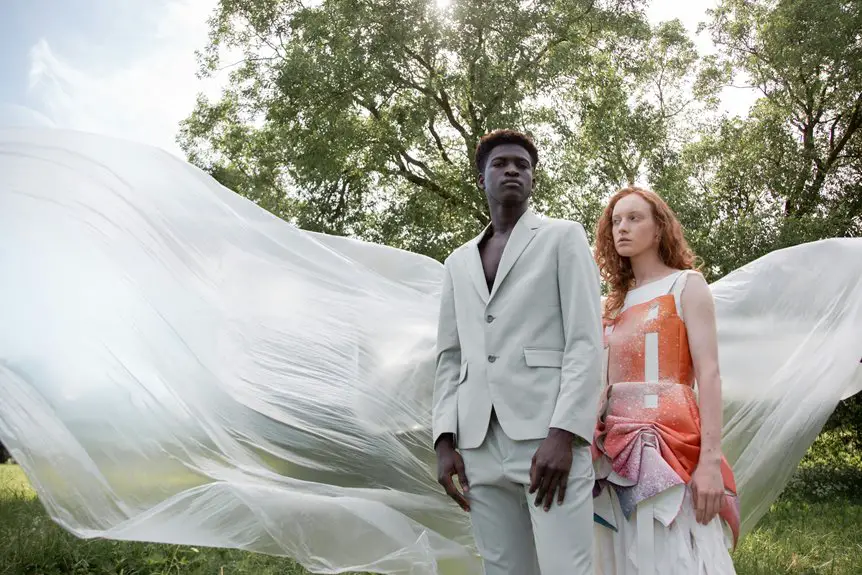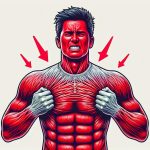Imagine buying a moisture-wicking shirt that keeps you dry during your workouts, only to later learn it’s made from petroleum-based polyester, a process linked to high carbon emissions and water pollution. You might wonder if the benefits of staying comfortable are worth the environmental cost. Before you decide, it’s important to understand what goes into making these fabrics and how they truly impact both the planet and your health.
Table of Contents
Key Takeaways
- Moisture-wicking fabrics often use synthetic fibers with energy-intensive production, leading to a significant carbon footprint and high water usage.
- Chemical additives in these fabrics can pose environmental toxicity risks and persist in ecosystems after washing.
- Synthetic fabrics shed microplastics during washing, contributing to water pollution unlike natural fibers.
- Bio-based and recycled materials are emerging as sustainable alternatives, reducing fossil fuel dependency and environmental harm.
- Advances in closed-loop recycling and waterless dyeing technologies help mitigate environmental impacts of moisture-wicking activewear.
Materials and Chemicals in Moisture-Wicking Fabrics
Although moisture-wicking fabrics are designed to keep you dry and comfortable, the materials and chemicals used in their production play an essential role in their effectiveness. Many traditional moisture-wicking fabrics rely on synthetic fibers like polyester, treated with chemical finishes to enhance water transport.
However, these chemicals can raise concerns about your ecological footprint. Fortunately, bio-based alternatives are emerging, using natural materials like bamboo or corn-derived fibers that reduce reliance on petroleum-based products.
These alternatives not only maintain moisture-wicking properties but also lower environmental impact during production. When choosing moisture-wicking gear, considering fabrics made with bio-based alternatives helps you support innovations that balance performance with sustainability, ultimately reducing the environmental toll of your active lifestyle.
Environmental Impact of Synthetic Fabric Production
When you choose synthetic moisture-wicking fabrics, it’s important to understand the environmental costs tied to their production.
These fabrics, often made from petroleum-based materials like polyester or nylon, carry a significant carbon footprint due to energy-intensive manufacturing processes. Extracting and refining fossil fuels releases large amounts of greenhouse gases, contributing to climate change.
Additionally, synthetic fabric production can involve high water usage, especially when processing fibers and dyeing materials. Although synthetic fabrics generally use less water than natural fibers like cotton, the overall environmental impact remains substantial.
Health Concerns Linked to Chemical Additives
Beyond the environmental costs, synthetic moisture-wicking fabrics often contain chemical additives that can affect your health.
These chemicals, designed to enhance fabric performance, sometimes carry chemical toxicity risks. When you wear these fabrics, your skin absorbs residues from substances like formaldehyde or PFCs, potentially causing irritation or allergic reactions.
Long-term exposure can increase health risks, including hormone disruption or respiratory issues. You mightn’t notice immediate effects, but repeated contact heightens the chance of adverse reactions.
It’s essential to be aware that these additives, while improving moisture management, introduce a trade-off in chemical safety. Choosing products with transparent ingredient lists or certifications can help minimize your exposure to harmful chemicals lurking in moisture-wicking fabrics.
Comparing Synthetic Moisture-Wicking Fabrics With Natural Fibers
While synthetic moisture-wicking fabrics excel at keeping you dry during intense activities, natural fibers offer distinct benefits that are worth considering. You’ll find that natural fiber benefits include better biodegradability and less environmental impact during production. Synthetic alternatives, like polyester, often rely on fossil fuels and can shed microplastics. Here’s a quick comparison:
| Feature | Natural Fibers | Synthetic Alternatives |
|---|---|---|
| Moisture Management | Moderate, absorbs moisture | High, wicks moisture quickly |
| Environmental Impact | Lower, biodegradable | Higher, non-biodegradable |
| Durability | Moderate, may degrade faster | High, long-lasting |
| Production Energy | Lower, renewable sources | Higher, fossil fuel-based |
| Microplastic Release | None | Yes, during washing |
Choosing between them depends on your priorities regarding performance and environmental care.
Advances in Sustainable Moisture-Wicking Technologies and Recycling Efforts
As demand for eco-friendly activewear grows, manufacturers have started developing sustainable moisture-wicking fabrics that reduce environmental harm without sacrificing performance.
You’ll find that sustainable innovations focus on creating eco friendly alternatives using recycled materials and bio-based fibers. These advances not only improve fabric functionality but also minimize waste and pollution.
Here are some key developments you should know about:
- Using recycled polyester from plastic bottles
- Incorporating plant-based fibers like bamboo and hemp
- Enhancing biodegradability through new fiber blends
- Developing closed-loop recycling systems for activewear
- Applying waterless dyeing techniques to reduce chemical use
Frequently Asked Questions
How Do Moisture-Wicking Fabrics Affect Microplastic Pollution in Oceans?
Oh sure, just toss more microplastic sources into the ocean cocktail! When you wear moisture-wicking fabrics, tiny fibers shed, worsening ocean health. So, you’re basically a microplastic party crasher in marine ecosystems.
Can Moisture-Wicking Fabrics Be Composted or Biodegraded at Home?
You can’t usually compost moisture-wicking fabrics at home since they often contain synthetic fibers that resist fabric decomposition. For effective home composting, choose natural materials like cotton or wool instead of polyester-based moisture-wicking clothes.
What Is the Typical Lifespan of Moisture-Wicking Clothing Items?
Think of moisture-wicking clothes as marathon runners—they last longer with care. Their lifespan depends on durability factors like fabric quality and usage frequency. With regular use, you can expect them to perform well for 1–3 years.
Are There Certifications That Verify Eco-Friendly Moisture-Wicking Fabrics?
You can look for eco certifications like OEKO-TEX and GOTS to verify eco-friendly moisture-wicking fabrics. Sustainable brands often highlight these certifications, helping you choose products that reduce environmental impact without sacrificing performance.
How Does Washing Moisture-Wicking Fabric Impact the Environment?
When you wash moisture-wicking fabrics, you use water and may release microplastics from synthetic fibers into waterways. Choosing gentle cycles and washing less often helps reduce water usage and minimizes environmental harm.
- What Is Pochampally Ikat? a Journey to India’s Silk City - June 27, 2025
- What Is Pochampally Ikat? a Journey to India’s Silk City - June 27, 2025
- What Is Pochampally Ikat? a Journey to India’s Silk City - June 27, 2025



